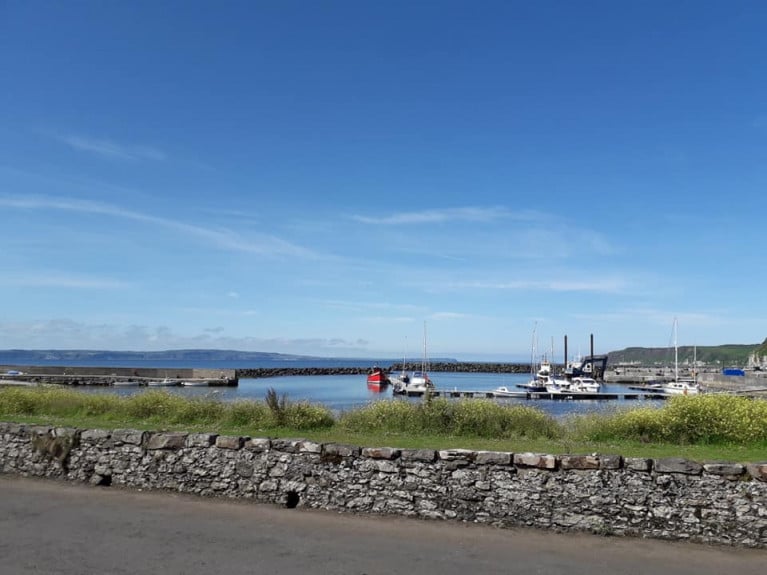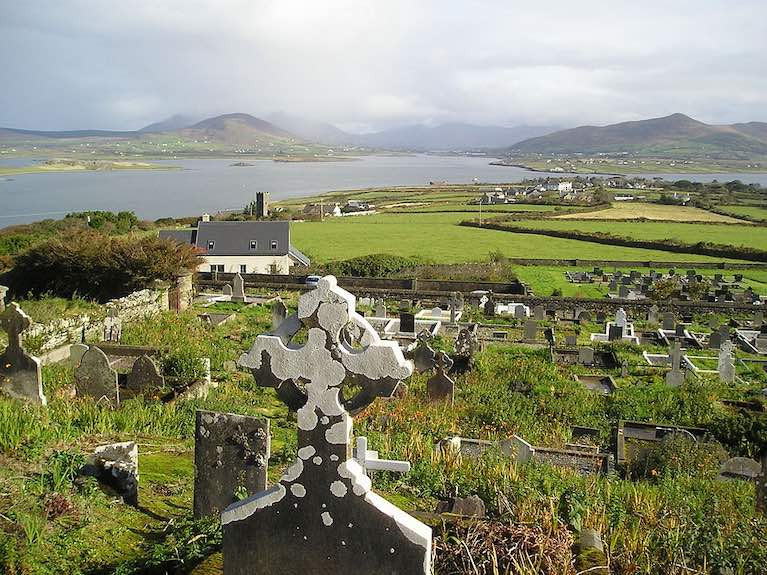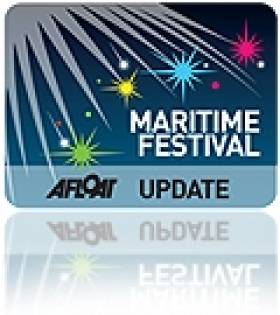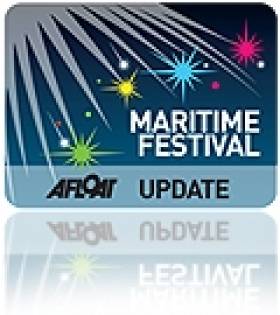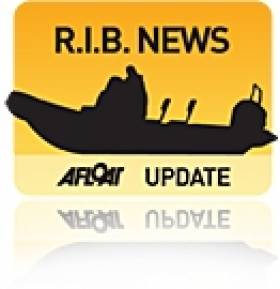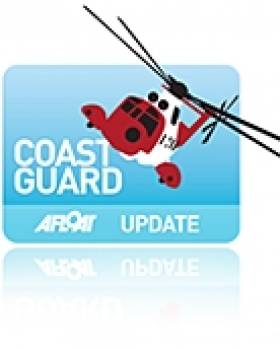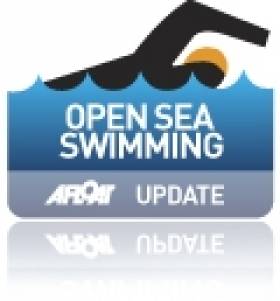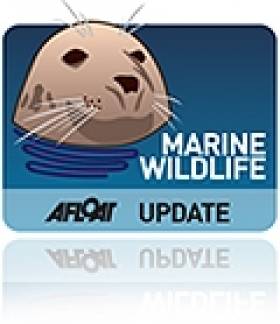Displaying items by tag: Rathlin
Residents of Rathlin Island off Co. Antrim are leading the way in the battle against climate change with communities on the island revealing ambitions to become carbon neutral.
In 2015 many countries pledged to achieve carbon neutrality by signing the Paris Agreement and the inhabitants of Rathlin have a ten year plan in place and are focusing on renewable enery, self-sufficiency, electric transport and a hyrdrogen ferry.
Rathlin Island is Northern Ireland’s most important seabird colony and its surrounding seas are Marine Protected Areas, featuring reefs, sea caves and maritime cliffs.
Living in an area such as Rathlin necessitates a harmonious relationship with the surrounding environment, and islanders feel passionately about leading the way when it comes to becoming eco-friendly and fighting climate change.
For more from ITV News including footage from islanders and on plans to fuel future ferries that could also be battery powered.
Currently the island is served by two ferries and as Afloat reported in 2016 the Spirit of Rathlin (car ferry) was custom built by Arklow Marine Services.
Tough Going in the Rathlin to St Kilda Challenge
As skipper of second-placed overall Derry/Londonderry/Doire in the 2015/2016 Clipper Round the World Race, the Atlantic Ocean to the west of the British Isles probably wouldn't have thrown anything worse at the crew of Sailing InTuition on the Rathlin to St Kilda race which began on Thursday 9th June.
The Salona 40 is used in Daniel's RYA training centre at Largs on the Clyde, providing training, adventure sailing and competitive offshore racing.
It was the first yacht to St. Kilda and for that won the Auld Alliance trophy as well as the Clyde Cruising Club Blue Water Trophy for overall first place.
 Approaching St Kilda
Approaching St Kilda
At eight entries the 2021 event was smaller than in previous years. With some uncomfortable swell in the North Atlantic, there were four finishers in an often hotly contested battle with some yachts sitting neck and neck for the majority of the race. Peter Foulds of Clyde Cruising Club in the First 40 CR Clockwork was second.
Third was Kuba Szymanski's Isle of Man-based First 40.7, Polished Manx, with fourth place going to Douglas Gray in the Finngulf 41, Shenavall from CCC and Serpents YC.
Daniel said; "The race was good fun, but conditions were tough, and it was very windy, blowing Force 7 with very big waves".
Using green hydrogen to supply island energy needs is the theme of several projects which Irish offshore communities and universities are involved in.
A consortium of Irish islands led by Kerry’s Valentia Island Co-op and Rathlin, Co Antrim is examining the feasibility of combining offshore wind with electrolyser technology to convert water to hydrogen.
The Aran islands are involved in this and several parallel projects, including work at NUI Galway (NUIG).
Researchers at the NUIG Ryan Institute Energy Research Institute are collaborating in a five-year project that will generate, distribute and use at least 300 tonnes of hydrogen per year produced from solar energy on the Balearic island of Mallorca.
The NUIG team involving Dr Pau Farràs Costa, Dr Rory Monaghan and Dr Thomas van Rensburg say it will reduce CO2 emissions by 20,000 tonnes per year.
The project will embed green hydrogen in the island’s whole energy system, from solar power generators which will produce the hydrogen, to gas grid operators which will distribute it and to bus operators, vehicle rental firms, homes, businesses and hotels using it for power, heat and mobility, they state.
The NUIG team will assess the economic impacts of the green hydrogen on Mallorca, as well as on other island communities involved in the project, including the Aran Islands.
“Green Hysland will be the first opportunity to demonstrate how green hydrogen holds the key to island decarbonisation and energy independence,” Dr Farràs Costa, of NUIG’s School of Chemistry, said.
Green Hysland - Deployment of a hydrogen ecosystem on the island of Mallorca is being supported with €10 million of European Commission funding, along with investments by partners of up to €50 million.
#rathlin – The Rathlin Sound Maritime Festival was celebrating its most successful run in the Festival's history, until high winds affected the crossings on the Rathlin Sound, according to Causeway Coast and Glens Tourism Officer, Caroline Carey.
It was estimated that this year's Festival opened to a record number of visitors and tourists to Ballycastle, with thousands of tourist enquiries leading up to and including the first weekend.
Caroline Carey, Tourism Officer at Causeway Coast and Glens explains, "It was just unfortunate that there were high winds on the Sunday 31 May which stopped many people going to Rathlin and enjoying the many planned festivities.
"Despite that, his year we were over the moon with the amount of interest in our local area. Figures are yet to be finalised, but we were confident that the Rathlin Sound Maritime Festival would have drawn in nearly 10,000 people to the area."
"We've had some amazing events on in both Rathlin and Ballycastle, which have really brought both of our communities together. It all kicked off on Friday with the Blessing of the Boats, which was absolutely beautiful. After the serene ceremony, Saturday saw a host of maritime events, with our very own jet man, power boating and kayaking, followed by some fabulous cookery demonstrations and art and craft events on Sunday at the Ballycastle Market.
"Our stand-out events include the fabulous Frances Black concert at the Marine Hotel on Sunday 24th, which was a resounding success, it was a real treat to have Frances performing. Frances's daughter, Aoife Scott also performed, and both were delighted to be back in the area and really enjoyed their time here! On Wednesday 27th, Trevor Robertson, the world renowned record breaking sailor also stopped by Rathlin Island, delivering a talk on his times spent 'overwintering' and inviting the locals to come on board his famous 'Iron Bark'.
"Despite the bad weather, the events on Sunday were very successful, it's just such a shame that some people couldn't make it over for them! The Festival celebrated our passion for the sea, local culture, heritage and history, and we finished with Rathlin's 'Big Lunch', music from 'Runabay' and our 'Living Seas' event on Sunday 31st May."
Sponsored by Tourism Northern Ireland, Malin Waters, Fair Head Tidal and Rathlin Island Boat House, the festival is renowned for its musical events, celebration of local produce and, of course, the many varied maritime activities.
Michael Cecil, Chair of Rathlin Community and Development Group explained: "inclement weather reduced the numbers somewhat but even that was a reminder that we are all very closely connected to nature. Seeing so many traditional boats , meeting so many like minded people from all over this earth and hearing so much traditional music over ten days was something very special."
"We would like to say a huge thank you to all who have come out and supported the Festival and ensured that this year was a huge success up until the Sunday. This was a team effort, and it wouldn't have been possible without the help from our sponsors and the Council Harbour & Tourism Section, Ballycastle Community Development Group, the Rathlin Development & Community Association, and the Ballycastle Chamber of Commerce and Industry," concluded Caroline Carey.
Rathlin Sound Maritime Festival 2015 is Launched
#rathlinisland – It's anchors aweigh as Northern Ireland's leading maritime festival, the Rathlin Sound Maritime Festival, was launched by the Mayor of Causeway Coast and Glens Borough Council, Councillor Michelle Knight-McQuillan, last Friday.
Organised by the Council Harbour & Tourism Section, Ballycastle Community Development Group, the Rathlin Development & Community Association, and the Ballycastle Chamber of Commerce and Industry and sponsored by the Tourism Northern Ireland, Malin Waters, Fair Head Tidal, and Rathlin Island Boat House there will be something for land and sea lovers, with sailing, historic and modern craft, demonstrations, exhibitions and guided walks, seafood themed markets as well as great music and entertainment.
Mayor of Causeway Coast and Glens Borough Council, Councillor Michelle Knight-McQuillan said, "Last year's festival was a huge success and we are looking to build upon that this year. We wanted to have even more for all the family at this year's festival! Once again, we are really looking forward to welcoming visitors to Rathlin Island and Ballycastle. The beauty of the Causeway Coast and Glens is renowned the world over and the Rathlin Sound is a hidden gem that is ready to be discovered."
Caroline Carey, Tourism Development Officer, Causeway Coast and Glens, said "The Festival is celebrating its third year now and promises to be awash with activities for all the family, with this year promising to be the biggest and best yet!
"Dad will be distracted by the Bushmills Whiskey Tasting whilst mum inspects the delights on offer at Ballycastle Market. All the while, the two kids can dress up as Vikings before taking on Finn McCool and his wife Oonagh who have been interrupted by their arch enemy, Benandonner!
"With everyone else preoccupied, Grandad signed up to a power-boating lesson whilst Granny is on a fishing trip on the Lord Moyle!"
The celebration is centred on Rathlin Sound, the body of water that lies between Rathlin Island and Ballycastle on the spectacular north coast of Ireland, right in the heart of the Causeway Coast and Glens. Kicking off on Friday 22nd May, the opening weekend will feature a fancy dress parade followed by the uniquely traditional blessing of the boats at the Marina in Ballycastle.
"Over the course of the week we will be celebrating our passion for the sea, local culture, heritage and history, culminating in Rathlin's 'Big Lunch', music from 'Runabay' and our 'Living Seas' event on the 31st May. We look forward to visitors arriving by boat, by car, bike and bus and cannot wait to share our little island and causeway coast with the world.
"The packed programme includes walking tours, boat trips; sports such as kayaking and dinghy sailing and both Ballycastle and Rathlin will definitely be 'sounding off' with a programme of traditional music including street entertainers competition open to everyone, traditional sessions in local pubs and hotels.
"The Ardglass Vikings will be docking in Ballycastle on Friday 29th May ahead of their epic battle with the Currachs and Drontheims on Saturday 30th May which could well continue into the next day! Come along on Friday to view the long boat as it arrives at Ballycastle Harbour before setting off for Rathlin".
Red Bay RIBs Enjoy Trip to Ardbeg Distillery (Video)
Last year the fleet encountered stormy force eight conditions but this year the weather was kind and most of the Redbay fleet were soon tied up in calm conditions and the flotilla headed for the Old Kiln Cafe. Drams of Ardbeg waited on a table for everyone at the door. One boat didn't get there due to mechanical problems. It was towed into Rathlin Island and picked up on the way home.
A traditional music band played and after lunch the group was treated to a tour of the Distillery. A great day for this group of Northern Ribbers.
Concern for RIB on Passage from Rathlin to Bangor
Concern for the occupants of the 8 metre RIB was initially raised when it was reported that it had left Rathlin harbour at 6.00pm in adverse weather conditions. Belfast Coastguard attempted to contact the vessel on VHF radio and mobile telephone but were unsuccessful.
Further enquiries yielded that the RIB was suspected to be heading to Bangor Harbour, and so Belfast Coastguard sent the Bangor Coastguard Rescue Team out to see if they could sight the vessel. In the meantime, Belfast Coastguard intercepted a communication from the RIB to Clyde Coastguard, whom they had contacted to inform them that they were just entering Bangor Harbour, in line with their passage plans.
In order to ensure they had safely arrived, Belfast Coastguard completed a radar search for the vessel and discovered that the occupants of the RIB were incorrect about their location, and had in fact just entered Belfast Lough, 13 miles from where they thought they were.
Belfast Coastguard finally managed to make communication with the RIB and ensured that they had sufficient fuel to complete their journey to Bangor. When the RIB arrived in Bangor they were met by the Bangor Coastguard Rescue Team who ensured they were safe and well and offered some safety advice.
Belfast Coastguard Watch Manager Alan Pritchard said:
"We became immediately concerned for the safety of the occupants of the RIB when we were informed that they were heading out in such poor weather conditions, and our worries increased when it became apparent that they had no idea of their position and began heading into the wrong port. The occupants of the RIB are now safely ashore and although were not in need of medical assistance they were quite badly shaken from the experience as it transpires that they had been trying to reach Bangor for several hours.
When we are informed of incidents such as these it allows the Coastguard to play a proactive role in preventing a situation from worsening by monitoring a vessel's passage. However, this could have all been prevented by the crew preparing for their journey, advising the Coastguard of their intentions and being aware of their own capabilities and weather conditions."
Swimming from Rathlin to Ballycastle for the RNLI
Gary explained further 'The swim is from Rathlin to Ballycastle and is planned for the weekend of 4-5 September. I won't be wearing a wetsuit and the swim is approximately 7 miles. Water temperature will be approx. 12 degrees and the challenge isn't so much the distance as the large number of Lions Mane jellyfish which lie between Rathlin and Ballycastle and the very strong and treacherous currents which swirl around the island. I am doing the swim for RNLI in memory of my friend and training partner, Ciaran McGinn who completed the endurance swim in 2007 and raised funds for his charity, Ballycastle RNLI. Training has gone well and I've done a 15K open water swim, Portrush to Portstewart two-way and a swim from Ballycastle to Fairhead in preparation for the event. I've been stung by the jellies and got my body used to the chilly waters. The swim to Fairhead last weekend opened my eyes to the strong currents when I made no progress for 90 mins on way back to Ballycastle and had to jump out onto road and hitch a lift back into town! Hopefully the tides will be kinder to me on day of swim. I'll be accompanied by Portrush kayaker Andrew Bingham who will follow the rib and provide me with an energy drink every hour. In accordance with ILDSA rules, at no time will I be permitted to touch the boat or kayak. Donations can be made online at justgiving.com/gary-knox and there are collection boxes in the shops along the prom in Ballycastle. In the event of bad weather, swim will be rescheduled for mid Sept or October. The swim has a low success rate and is very dependent on conditions and tides on the day'
Gary who is a French teacher, 38, and swimming coach at CAI who took up sea swimming in 2008 and lives in Aghadowey. On Sunday he came down to meet the crew and tell them about the swim.
Judy Barr Lifeboat Press Officer said,
This is an amazing feat for anyone to attempt and we are delighted that Gary is raising funds for our volunteer crews and the Station who depends on donations to keep our two boats available for rescues at sea.'
Whale Sighting confirmed off Rathlin
The Irish Whale and Dolphin Group believes that the whale spotted off Howth and Dublin Bay last week may be the same marine animal spotted at the foot of cliffs on Rathlin Island. The whale is thought to be moving down the Irish Sea, a rare behaviour for a humpback. Pictures of the sighting have allowed the IWDG identify it as a humpback, but they are waiting for higher-resolution images to match it with its counterpart in Howth.
The whale was spotted off Rathlin on July 11, three days before it surfaced near Dublin. The IWDG has said: "This is an extremely important sighting as it is only the second validated sighting of this species in N. Irish waters.
"In fact, as the previous sighting was closer to Colonsay, Islay, Scotland, we could easily argue that this is in fact the 1st record of a humpback whale in N. Irish waters."
Whales can cover more than 50 miles a day and migrate more than 5,000 miles in a year.
More info on the current crop of sightings can be found on the IWDG website, HERE.
Anyone spotting a whale is required by law to give them at least 100 metres room and travel parallel to their track, unless you want to end up like an unlucky pair of South African sailors, dismasted by a breaching Right Whale off Cape Town this week.


























